Your cart is currently empty!

Nature vs Tech: How to Use Technology to Get Kids Outside
Screens and gadgets dominate our world, and the great outdoors often take a backseat to the digital realm. But what if we told you that technology, the very thing that seems to tether our kids to their devices, can actually be used to get them outside and harnessed to rekindle a love for nature? Finding that elusive balance between screen time and the great outdoors can be a challenge for families. However, the very tools that keep us indoors can also be the key to igniting a passion for nature, conservation, and the environment. Today, UK mom and educator, Hannah Martin explores how families and kids can cleverly leverage technology not only to spend more time outside, but also deepen their understanding of the natural world that surrounds them.
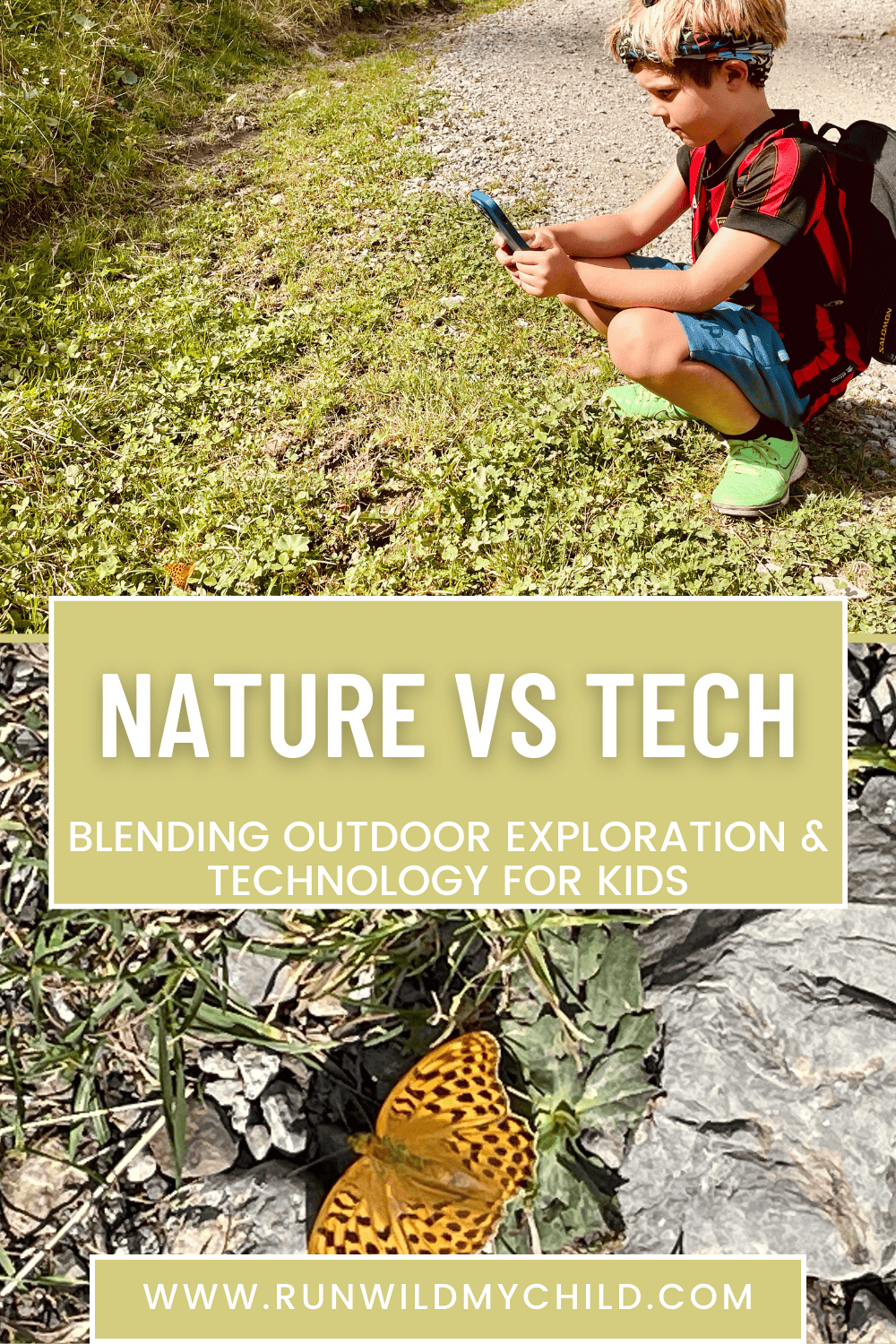
Screens aren’t the enemy
It’s easy to be inundated with concerns about the harmful effects of excessive screen time. Too much screen time (and the “wrong” kind of screen time) can absolutely have detrimental effect on children (and adults). But screens have firmly established their presence in our lives, and they’re here to stay. As parents, recognizing this reality is crucial.
Instead of placing the blame solely on screens for various concerns, as parents, we can shift our perspective towards actively engaging with technology in a constructive and balanced manner. Screens can be powerful tools for learning, connecting, and exploring, and it’s essential that we find ways to harness their potential rather than labeling them as the root of all problems.
Technology is an omnipresent force, offering numerous advantages when integrated thoughtfully into children’s lives. It can be an invaluable educational resource, fostering creativity, curiosity, and engagement with the world. Moreover, screens can be the gateway to outdoor exploration. When children learn to use technology as a tool for enhancing their understanding of the natural world, they’re more likely to venture outside, armed with a newfound sense of wonder and knowledge.

Moderation in all things (including tech usage)
Instead of shunning technology and screens entirely, the key is moderation. Moderation allows children to enjoy the benefits of technology while still experiencing the physical, emotional, and social richness of the non-digital world. By letting our kids have screens in a responsible and mindful way, we can equip our children with the skills they need to navigate the digital landscape and, at the same time, cultivate their appreciation for the wonders of the world around them.
The call for moderation in screentime doesn’t mean rejecting technology but rather embracing it with a discerning eye. It’s about striking a balance that prioritizes outdoor activities, face-to-face interactions, and a variety of real-life experiences that nurture a child’s holistic development. Demonizing screens can actually make them more attractive to kids and doesn’t teach them how to use tech in responsible ways.
As we jump into this discussion, we’ll explore how to guide our young digital natives to use screens in ways that are not detrimental but empowering, enriching, and, above all, balanced.
How to turn tech into your ally
The key to using tech in a way that isn’t harmful to kids lies in how we, as parents and caregivers, guide our children to use technology responsibly. Screens are not inherently evil; instead, it’s our role to ensure that our children engage with them in a healthy and balanced way, finding a harmonious coexistence between screen time, outdoor adventures, and non-screen activities.
We have discovered a few ways to use technology as a catalyst for bringing children into nature, which we can’t wait to share with you today. From mobile apps that transform a simple walk in the park into a treasure hunt of biodiversity, to using tech to capture your outdoor adventures, this post will show you how to make technology your ally in nurturing a sense of wonder and discovery about the environment.
How our love of nature led us to YouTube
When the pandemic hit, I suddenly became more aware of the amount of time we were spending glued to our screens. Everything moved online, from school to work to birthday parties and happy hours. Screens were our gateway to our community, family, and friends. They helped us stay connected to what mattered most.
But as time went on and things went back to normal, our screen time consumption didn’t decrease as much as I thought it would. We’d found all new ways to use screens for new reasons, some of which were really interesting and educational, including kids programming on YouTube.
Trust me when I say that I understand that not all YouTube programming for kids is interesting or educational, but occasionally we’d find a hidden gem. I realized that my son was absorbed in various programs (some nature-based, others not so much), and fixated on the number of likes and subscribers they garnered. This sparked an idea!
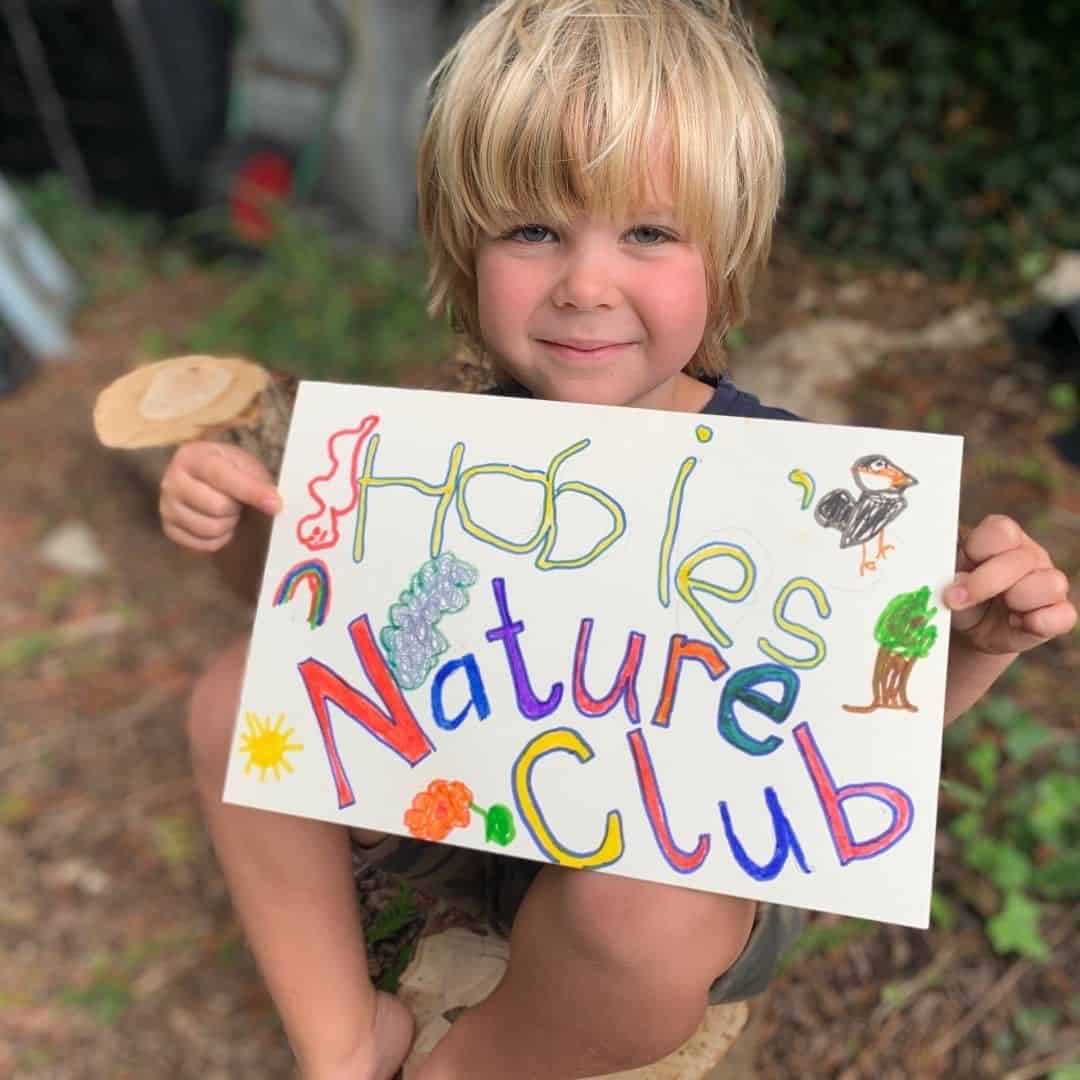
Creating our own YouTube show
We decided to create our own YouTube channel, with the goal to inspire parents and caregivers to spend more time outside with their children by showcasing fun and easy activities and crafts. We hoped that our channel would captivate viewers’ attention, enticing them to put down their screens (after watching), and get outside! We wanted to show kids how they could engage with a parent or caregiver and enjoy the boundless learning and fun that nature offers.
As a family, we’ve always had a love for the outdoors and nature. This felt like such a fun and inspiring project. This idea not only enhanced our family time together (as we were our crew and production team), but it also multiplied our outdoor adventures tenfold. We had content to create, which held us accountable for getting outside, trying new things, and adventuring together.
However, let me tell you that managing a YouTube channel is no easy task, especially with our busy lives. But we loved the challenge. Working together as a family unit, we brainstormed ideas and shared the entirety of our outdoor experience, making it an incredible and rewarding journey for all of us. We learned so much from our adventures and have so many amazing memories from the activities we did. Plus, now we have tangible physical evidence (in video) of our family time together, which I know we’ll look back on fondly for the rest of our lives.
Hobie’s Nature Club- watch here
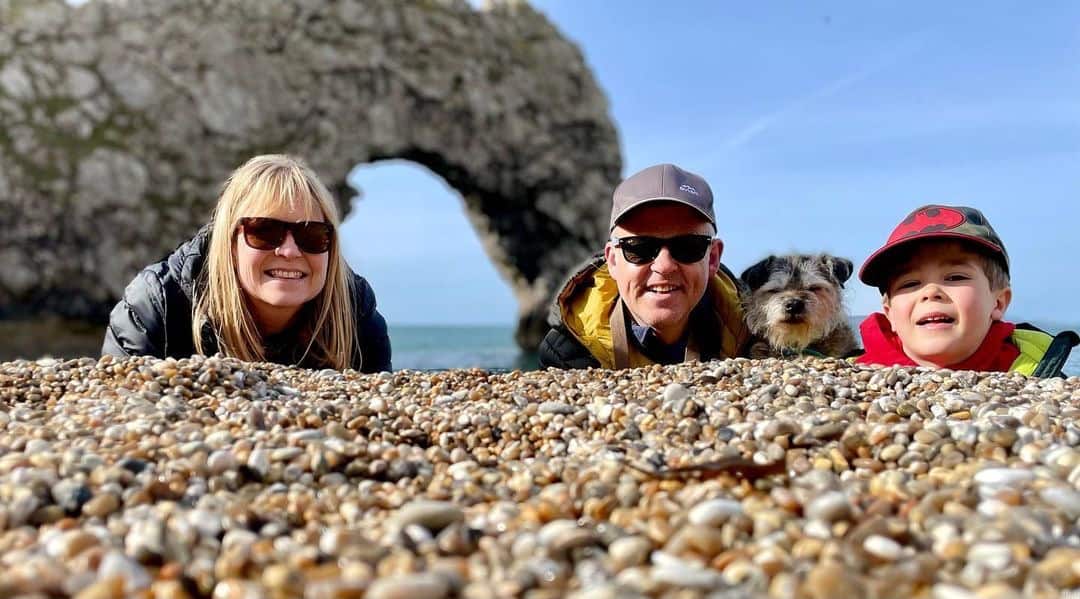
Skills learned through making our YouTube show
With our YouTube channel about outdoor activities and nature, our family (and particularly my son) all learned so many new skills. While I’m not saying that creating a YouTube channel is for everyone, don’t discount the experience and skills that the whole family can learn together.
First off, we all had to learn some technology-related skills. My partner was our videographer, but we all had a say in setting up the scene and getting the shots. We learned a lot about lighting, editing, filming, and production.
As for non-tech skills, we all had to work together to create engaging and informative content. We are by no means experts (either in nature or in tech), so one of the best parts about filming Hobie’s Nature Club was that we were all learning about nature together. We had to research our nearby nature, the outdoor activities in our area that we could film, come up with ideas on how to tie them to learning, look up crafts, and make the content educational (as well as fun and entertaining). Recording the videos helped my son build public speaking and presentation skills.
This diverse skill set extends beyond the digital realm. I feel like these skills will not only empower him in the world of technology, but also prepare him for a well-rounded education and equip him with some life skills that are invaluable in adulthood.
Outdoor discovery through apps
YouTube got us started thinking about all the other valuable ways that technology can be an educational resource, fostering creativity, curiosity, and engagement with the world. Moreover, various forms of technology (with and without screens), can be a great gateway for kids to outdoor exploration and learning about nature and the world around them. Technology can make it even more fun! When children learn to use technology as a tool for enhancing their understanding of the natural world, they’re more likely to use it in positive ways, and to venture outside, armed with a newfound sense of wonder and knowledge.
One of our favourite ways to incorporate technology into our outdoor activities is by utilising a variety of apps that encourage kids to step outside and explore the world around them. We’ve experimented with several apps and got some additional recommendations from the moms on the Run Wild My Child Creative Team.
Nature identification apps
Nature identification apps have revolutionized the way families connect with the natural world, fostering a deeper understanding of the environment. Whether it’s identifying a mysterious bird call, a vibrant wildflower, or a species of tree, these digital tools provide instant answers that transform nature walks into interactive learning experiences. Through these apps, children and parents alike can engage in a collective quest for knowledge, encouraging teamwork, and inciting curiosity and conversation as they explore the outdoors together. They encourage open dialogue and collaboration, with family members sharing their findings and observations, and often sparking discussions about the natural world and conservation.
Moreover, the thrill of making a new discovery or successfully identifying a species becomes a shared triumph, strengthening the emotional bonds within the family. In an age where screens often isolate individuals, nature identification apps have the power to reconnect families with nature and with each other, making outdoor excursions more memorable, interactive, and meaningful.
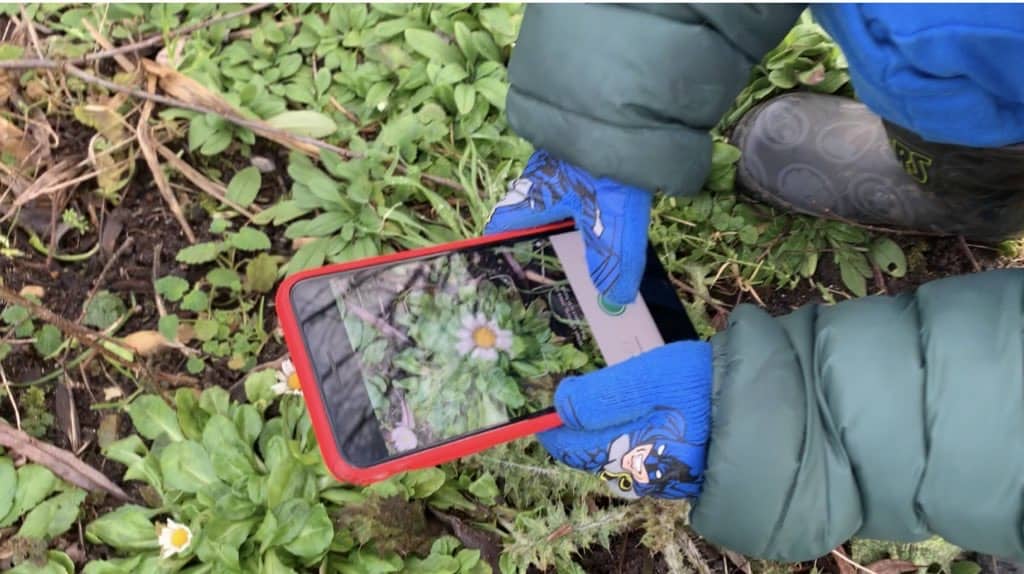
Best nature identification apps for kids
There are countless nature apps and digital field guides available that can help families identify local flora and fauna. These apps can turn a simple walk in the park into an educational adventure. Here are a few of our favorites:
- iNaturalist – A wonderful free app to help you identify plants and animals around you through photos and track your discoveries.
- PlantSnap / Leaf Snap – This is a free app that allows you to take photos of the leaf/plant/tree you are trying to identify and sends you through the options in a fun and interactive way.
- Fossil Explorer- Natural History Museum – We are big dinosaur fans in our house and we love a day out fossil hunting. This app helps to identify likely fossil finds in your area and covers the whole world. It provides a treasure trove of information and pictures.
- Picture This – Another free app that’s brilliant for capturing images of nature, plants, flowers, and insects and identifying them for you.
- Bumblebee Conservation – This app isn’t as tech-savvy as the other apps (you can’t take photos), but through illustrations, it helps you identify different types of bees providing the different characteristics of each species of bee.
- Picture Mushroom – This app is great for fall/spring exploration as this gives you the opportunity to photograph mushrooms and fungi and identify them for you. This is fab if you are into foraging, as it will detail whether it is edible or poisonous. (Never rely exclusively on an app to identify anything you may eat. Educate yourself on the item you’re foraging and always be 100% sure you’ve identified it correctly before consuming.)
- Google Lens – An incredibly quick access to a wealth of knowledge regarding the things we’ve captured in photos. In fact, while on a recent hiking trip in France, we discovered that we were close to encountering a Wild Boar by using Google Lens. It wasn’t of a paw print or from hair as you might think, but by taking a photo of an unusual-looking poop!

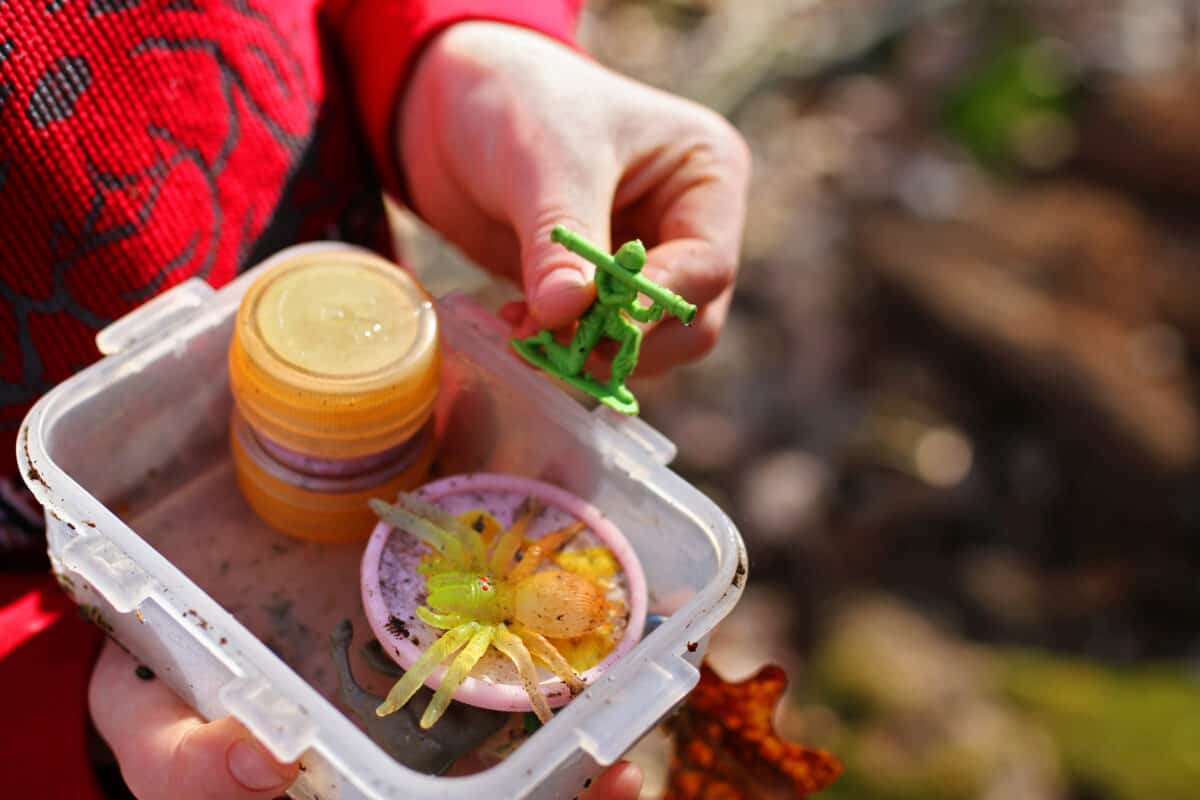
Geocaching
Geocaching combines technology, outdoor exploration, and good old-fashioned treasure hunting! By using the (free) geocaching app, families can use GPS-enabled devices or smartphone apps to search for hidden containers (geocaches) in various outdoor locations. Geocaches can be found all over the world and almost anywhere you can imagine. Geocachers usually hide caches in locations that are important to them, reflecting a special interest, memory, or skill of the cache owner. These locations can be quite diverse – from under a bench at your local park, behind a marker along a bike trail, in a fake rock at the botanical garden, or behind a false brick on the side of a building on a busy city street.
All your need to get started geocaching is a smartphone, a geocaching account (free), and a sense of adventure! Geocaches are everywhere, and it’s a great budget-friendly low-entry activity that’s great for everyone in the family! It’s a fun and interactive way to get outside and explore.
For more information, check out our full post: Beginner’s Guide to Geocaching with Kids
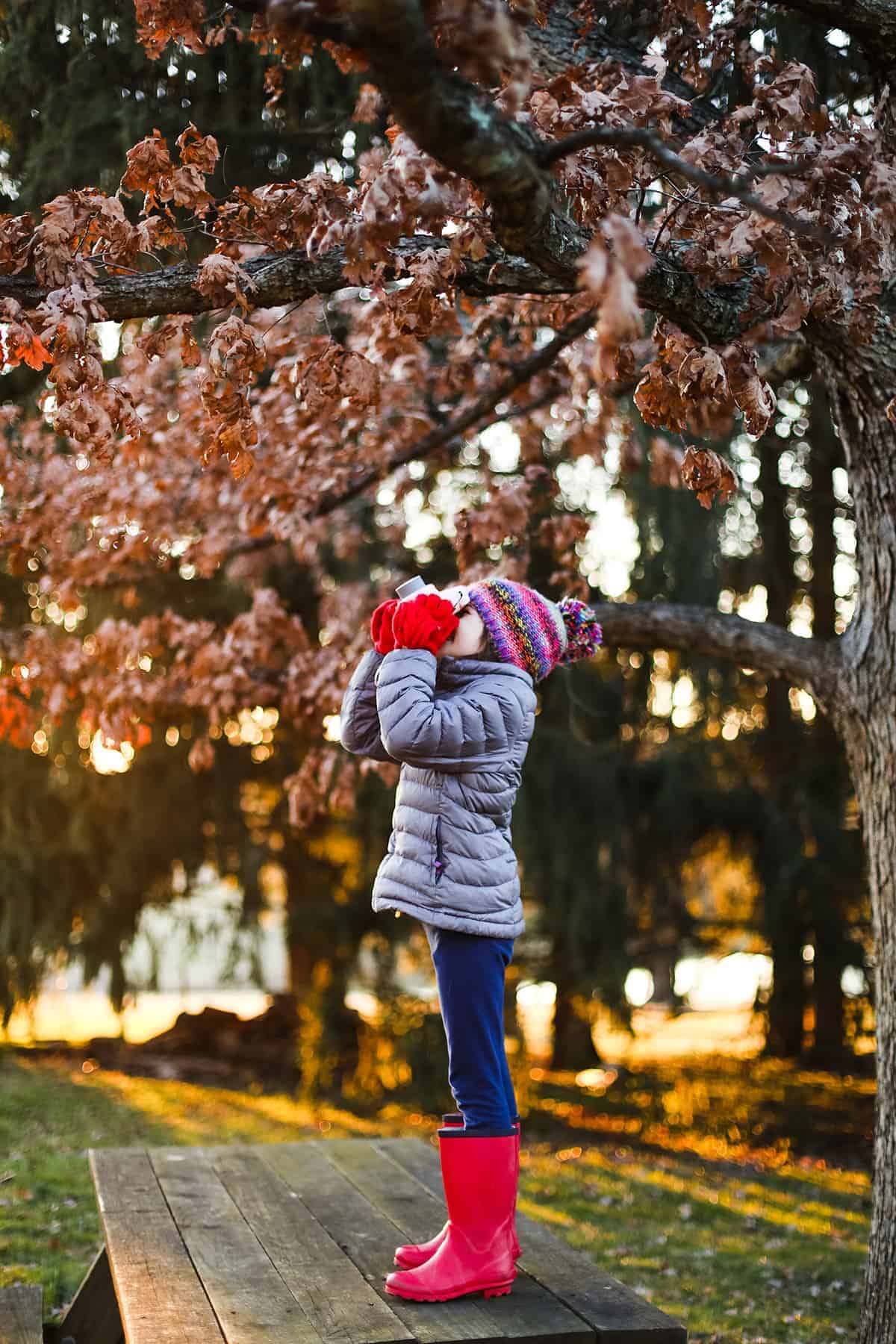
Capturing memories of outdoor adventures
Gone are the days of traditional photo albums, diaries, or scrapbooks filled with handwritten notes and hand-drawn pictures. In this digital age, children are finding new and exciting ways to document their experiences and bring them to life. Technology can make this really fun and exciting for kids.
Photography
Encouraging kids to use their smartphones or tablets (0r digital cameras) to capture the natural world around them is a creative and empowering way to enhance their outdoor experiences. This practice not only stimulates their connection with nature but also nurtures a range of skills and interests.
Kids can take photos of plants, animals, insects, and landscapes, adding written notes or voice recordings to a “digital nature journal” to describe what they’ve encountered on their outdoor adventures. This process encourages careful observation, attention to detail, and critical thinking, as they learn to identify and appreciate the nuances of the environment. Over time, their digital nature journal becomes a personalized record of their outdoor adventures, offering a sense of accomplishment and a means to track their evolving knowledge of the natural world.
Taking and editing photos taken during outdoor excursions is an excellent way to introduce kids to basic photography skills. By using photo editing apps, children can enhance their images, adjusting lighting, colors, and compositions to create stunning, artistic representations of the natural world. This creative process allows them to express their unique perspectives and feelings about nature, fostering their artistic sensibilities.
Video diary
This summer, my son decided to swap his pen and paper for an Apple Video app to capture his holiday memories. By taking video on a tablet and then using Apple Video to edit it all together to create a video recap of our trip, our young diarist elevated his vacation journaling to a whole new level. Rather than static words and images, his videos provide a window into his perspective of our trip, capturing the sights, sounds, and emotions of each moment he deemed video-worthy. He captured our trip from his perspective, which was really amazing for us (as parents) to see. With his narration and videos, the story truly comes alive, transporting the viewer to that magical place and time. It’s a powerful and wonderful way to document a trip or event that we’ll treasure for years.
Other great video editing apps are iMovie and InShot.
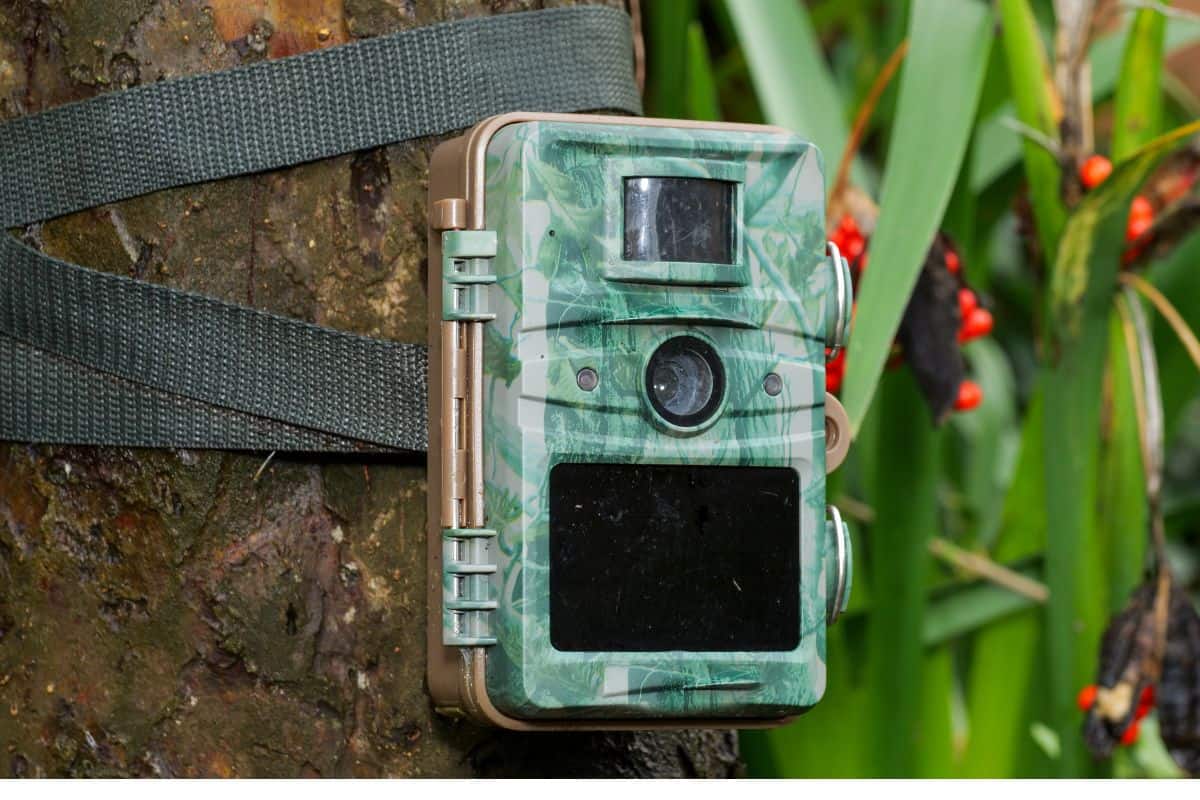 Using tech to observe wildlife
Using tech to observe wildlife
Trail cameras for capturing wildlife images
Setting up and using a trail camera is an exciting and educational way for kids to use technology to connect with the wildlife around them. This hands-on approach allows young naturalists to observe, track, and learn about the diverse creatures that share their outdoor environment. To begin, let your kids help select a suitable location for the trail camera, preferably near a known wildlife path or in an area with ample signs of animal activity. They’ll need to secure the camera to a tree or post and aim it at the desired target area. This setup process offers a valuable lesson in animal behavior, as children must consider where animals are likely to pass and how to remain discreet to avoid scaring them away.
Once the trail camera is in place, kids can eagerly await the results. As the camera captures photos or videos of passing wildlife, children can take on the role of amateur naturalists, carefully analyzing the footage to identify species, behaviors, and patterns. This process nurtures their observation skills and sharpens their knowledge of local wildlife. Additionally, the element of surprise and discovery that comes with checking the camera’s memory card creates a sense of anticipation and excitement, keeping kids engaged and enthusiastic about their wildlife-tracking endeavors.
Trail cams offer kids a glimpse into the world at night
Trail cameras offer an excellent opportunity for children to experience wildlife in its natural habitat without disturbing or endangering the animals. Most trail cameras also work at night with a flash, giving you a glimpse into the nocturnal world and wildlife action. From mammals like foxes, deer, badgers, and hedgehogs to elusive night-dwelling birds and insects, the camera reveals the hidden world beyond our human perception. This footage can then be used to engage your children in discussions and inquiries about the animals they observe. Encourage them to research and identify different species, their behaviours, and how they adapt to the darkness.
This hands-on, technology-based approach enables them to connect with and appreciate the intricacies of the animal kingdom, fostering a love for nature and wildlife conservation. It’s a powerful tool for learning about ecosystems, animal behaviors, and the importance of coexisting with the natural world.
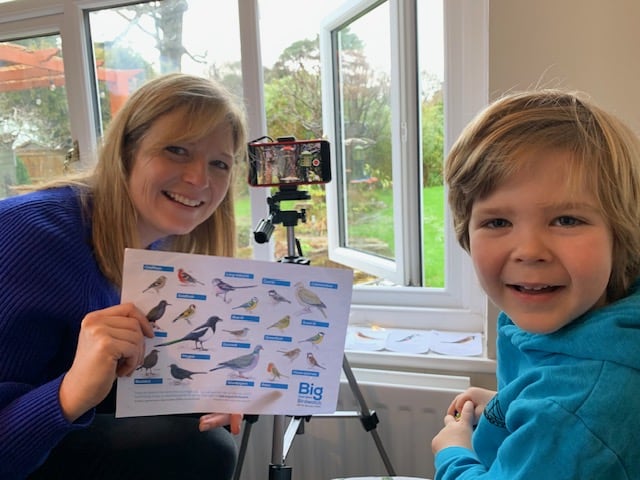
Telescopic lenses and pocket microscopes
Setting up a mobile phone with a telescopic lens or connecting your smartphone to a pocket microscope opens up a whole new world of wildlife (and nature) viewing possibilities, right outside your door.
Equipping your mobile phone with a telescopic lens makes bird identification easier and more accessible, especially for beginners. With the ability to capture clear, detailed photos of the avian visitors, you can refer to bird identification guides to identify the species with your children. This creates a fun and educational experience, encouraging curiosity and learning about the diverse range of birds that frequent your garden.
Using a pocket microscope in nature really helps your kids slow down and appreciate the intricacies and details of things you see every single day. You’ll literally stop to smell and see the roses (and all the other flowers along the trail as well). It also gives your kids invaluable and concrete STEM skills. But more than that, it nurtures their creativity, curiosity, and imagination. It instills a sense of wonder. The plethora of features to see on even the tiniest bit of nature is surprising. Hairs and pores dot leaves and insect legs, scales cover butterfly wings, jagged edges surround bits of sand, and minute creatures scurry in soil and pond water. Nature is amazing!
For more information, check out our full post on using a pocket microscope (which includes our top pocket microscope recommendations).

Screen-free (but tech-enhanced) outdoor fun
When we send our kids outside to play, we hope they will use their imagination for hours. Endless hours of unstructured free play! It may sound counter-intuitive, but some technology can actually help with open-ended free play and give your children even more freedom to explore the world around them safely. Here are a few tech items that promote and encourage outdoor exploration and play.
Walkie-talkies
Walkie-talkies are more than tech gadgets; they become catalysts for camaraderie and shared excitement, fuelling a passion for the great outdoors. By equipping children with these handy communication devices, parents and guardians provide a means for kids to venture into the great outdoors while staying connected. This fosters a sense of independence, as kids can explore with confidence, knowing they can easily communicate with adults or friends. Whether on a hike in the woods, a camping trip, or simply playing in a large park, walkie-talkies not only enhance the outdoor adventure but also serve as an essential safety tool, ensuring that children can promptly reach out in case of emergencies or simply share their exciting discoveries, making outdoor exploration not only safer but more enjoyable and memorable.
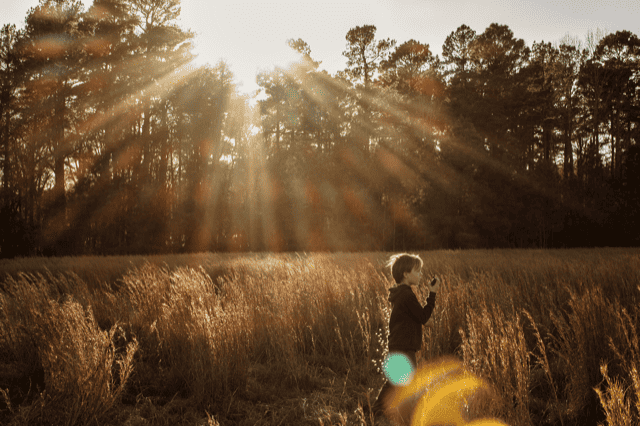
GPS-enable devices
Another modern, trendy tech device is the GPS watch for kids. GPS-enabled devices and mobile apps can enhance safety during outdoor adventures. Parents can track their children’s whereabouts (giving parents peace of mind), while giving kids the opportunity to safely explore. Armed with parental knowledge of their whereabouts, children can fully immerse themselves in the beauty surrounding them, eagerly uncovering hidden gems and gaining a deeper appreciation for the natural world.
We have a Gabb watch and have been really happy with it. We can set up geofencing, call/text our child, and track GPS coordinates from our phones, without any social media access for him. It’s been a game-changer when it comes to letting him ride his bike around our community, to friends houses, or down the street to the fishing pond.
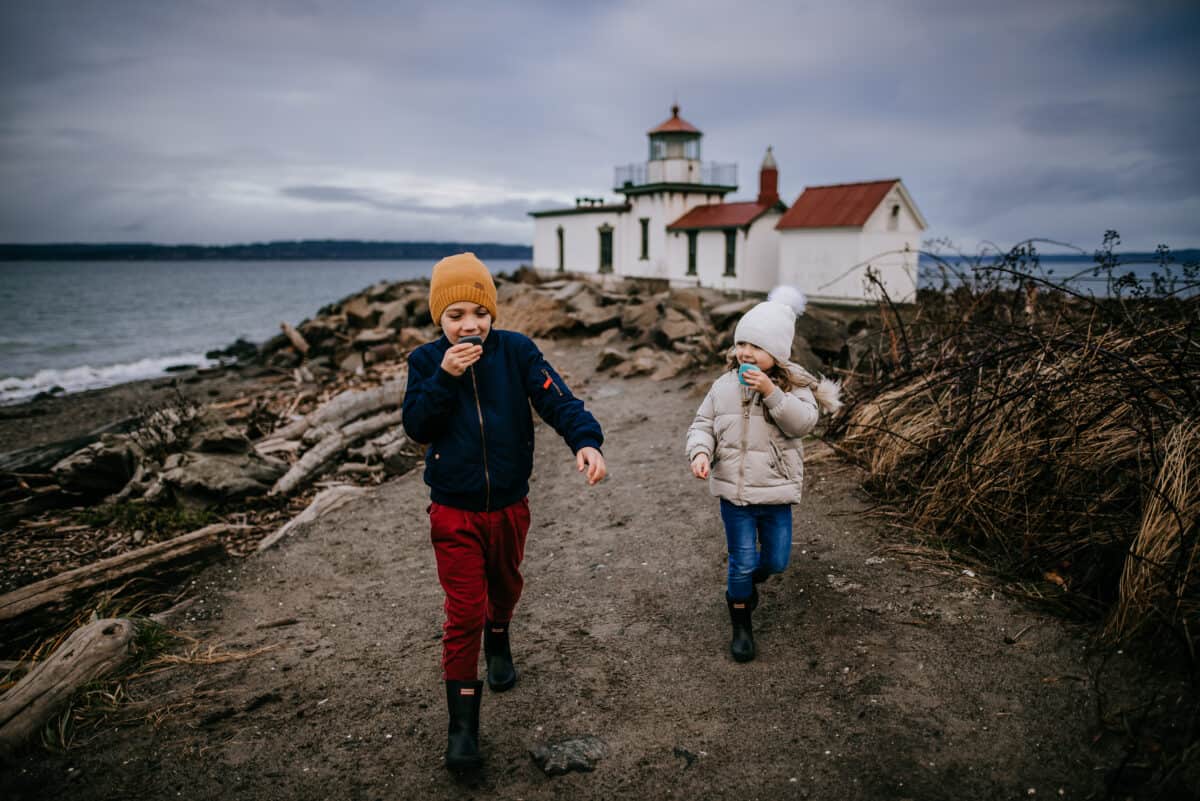
Metal detectors
Another fun tech device we have invested in to engage in exciting outdoor activities is a metal detector. Incorporating metal detectors offers a unique opportunity for children to discover hidden natural treasures right under their feet! From exploring beaches after stormy tides to scouring forest trails, the detectors can help kids find interesting geological specimens like fossils, minerals or even unique rocks. Whether searching in fields, parks or historic sites, there’s a chance to stumble upon artefacts like old coins, buttons or even relics from times gone by. These findings provide a gateway to learning about the country’s fascinating heritage, helping children develop a sense of connection to the land they explore.
Metal detecting can also serve as a tool to in-still a sense of environmental responsibility in children. Encourage them to leave no trace, respecting the natural surroundings they explore. Teaching them about the importance of conservation and responsible metal detecting practices helps preserve the integrity of the environments they love, ensuring these treasures are available for future generations to enjoy.
See my full post for more information on Metal Detecting with Kids.
Using technology to get outside
It’s evident that technology, when used mindfully and in moderation, can be a powerful ally in encouraging kids to embrace the great outdoors and explore the world around them. Rather than vilifying screens as the root of all problems, we should recognize the immense potential they offer to spark children’s curiosity, enhance their learning, and enrich their lives.
By leveraging nature identification apps, encouraging outdoor photography and digital art, setting up trail cameras to track wildlife, and utilizing tools like walkie-talkies for safety, we can empower the next generation to connect with the natural world in meaningful and innovative ways. This harmonious balance between technology and nature not only deepens their appreciation for the environment but also equips them with a diverse skill set and instills lifelong values of exploration, conservation, and the joy of being outdoors.
As we embrace the digital age, let’s remember that screens are not the enemy; they’re a gateway to new adventures, new knowledge, and new connections with the world around us. By incorporating technology, we can equip our children with the knowledge and skills they need to navigate an increasingly digital future.
Let’s create a world where technology and nature walk hand in hand, guiding our children to be tech-savvy explorers of the great outdoors.
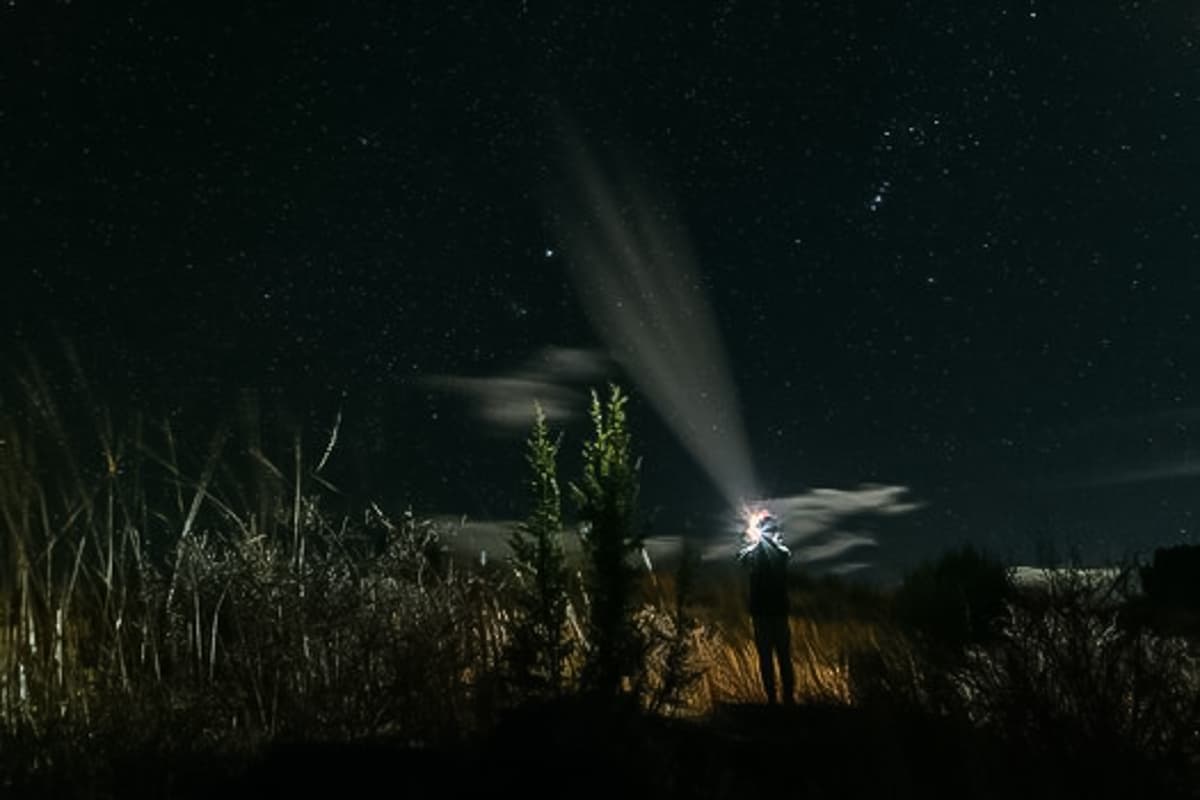
How do you use technology to get outside?
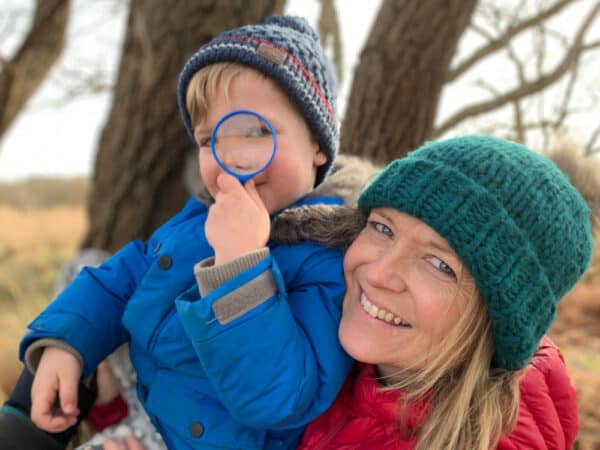
About the author
Hannah Martin has worked as a PE Teacher in the UK for 15 years. She has always loved being active outdoors. However, she discovered a new passion for nature and appreciating the environment when she had her son Hobie (now 5 years old). Hannah and Hobie’s vision is to inspire parents to spend time doing fun, creative, nature activities outdoors with their children; no matter where they live and whatever the weather. They believe spending time together outdoors as a family will encourage future generations to love and care for the world, wildlife, and environment.
Find more from Hannah (and Hobie) in the following locations:
Instagram: @hobies_nature_club
Website: hobiesnatureclub.co.uk
YouTube channel: Hobie’s Nature Club
RWMC Posts: Hannah Martin
Comments
3 responses to “Nature vs Tech: How to Use Technology to Get Kids Outside”
[…] For more information on this topic, be sure to check out our full post on using technology to get kids outside. […]
[…] Run Wild My Child […]
[…] games are great for physical activity and don’t need fancy […]

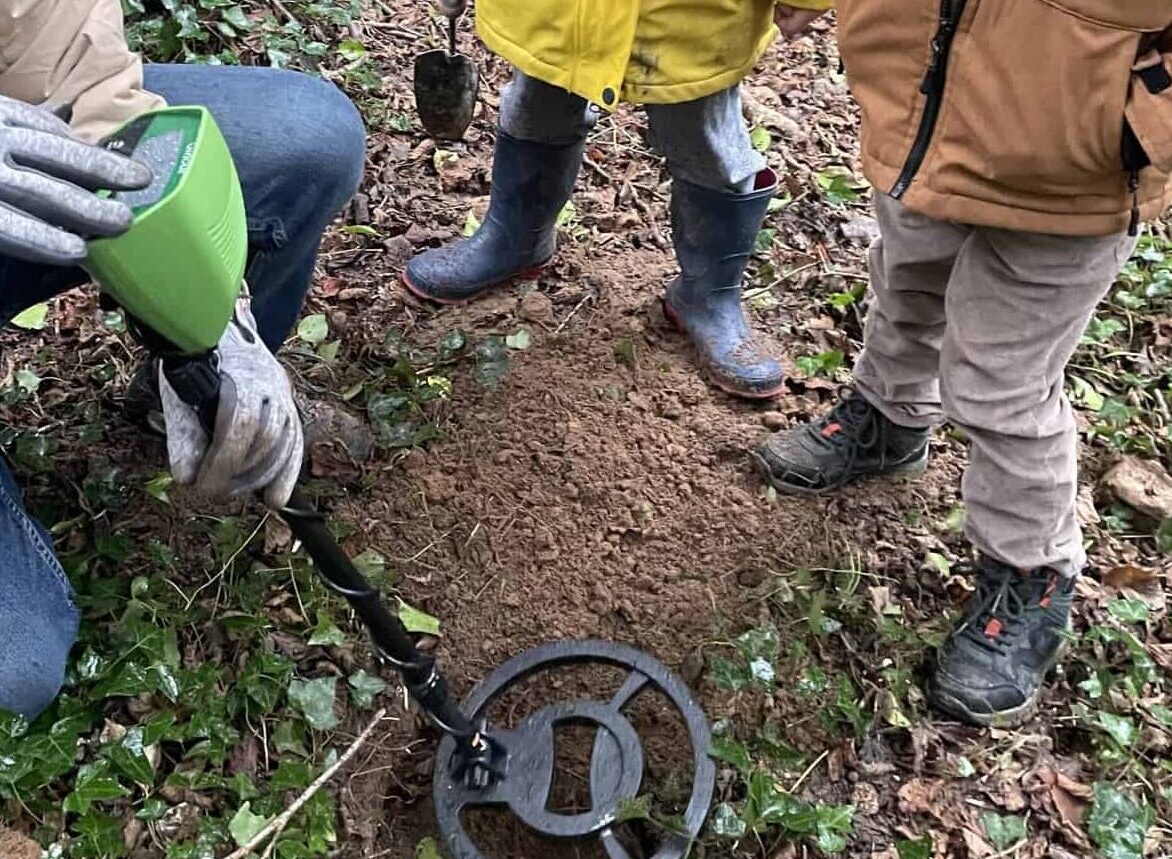
Leave a Reply